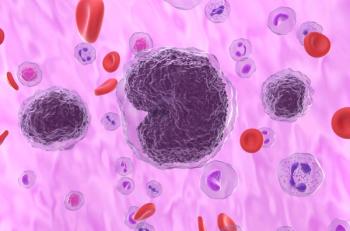
Amyloidosis Linked to Lower Long-term Survival Following Kidney Transplant
Patients who had end-stage renal disease secondary to amyloidosis had poorer survival rates compared with patients with kidney disease secondary to other causes.
Amyloidosis may impact long-term survival rates of patients receiving kidney transplants, according to a new study, which found that patients who had end-stage renal disease (ESRD) secondary to amyloidosis had poorer survival rates compared with patients with kidney disease secondary to other causes.
The researchers examined follow-up charts of patients who had a kidney transplant between 1992 and 2016, identifying 48 patients for the study. Half of patients had a kidney transplant due to ESRD as a result of amyloidosis, and the other half had kidney transplants following ESRD as a result of other causes.
Among the 24 patients with amyloidosis, the 10-year survival rate was 68.2% compared with the 86.1% survival rate seen among patients without amyloidosis. At 20 years, 36.9% of patients with amyloidosis were still alive compared with 60.3% of patients without amyloidosis.
While survival rates differed vastly, biopsy-proven acute rejection and graft failure rates were not significantly different between the 2 groups, with 12 patients with amyloidosis and 15 patients without amyloidosis experiencing acute rejection and 2 patients with amyloidosis and 4 patients without amyloidosis experiencing graft failure. According to the researchers, the majority of rejections were T-cell mediated, and these findings were consistent with previous studies.
“Interestingly, chronic rejection was more frequent in our control group than in our amyloidosis group, and serum creatinine levels tended to increase in the control groups,” noted the researchers.
Patients with amyloidosis experienced more bleeding complications, including intracranial hemorrhage, spontaneous retroperitoneal hematoma, and gastrointestinal bleeding. Among the 6 patients with amyloidosis who experienced bleeding complications, 3 died as a direct cause. Meanwhile, posttransplant hypertension was more common among the patients without amyloidosis, as well as cytomegalovirus, BK virus, and herpes simplex virus infections.
The researchers also compared the patients with amyloidosis who received kidney transplants with 25 patients with amyloidosis who were treated with dialysis. Patients receiving dialysis were older and more frequently had gastrointestinal involvement of amyloidosis.
“Although patient survival was not significantly different between patients who had a kidney allograft and those who were treated with dialysis, patients in the latter group had significantly shorter duration of time to death after start of renal replacement therapy,” wrote the researchers.
Causes of death among patients receiving dialysis included septic shock, cardiac complications, gastrointestinal bleeding, and gastric cancer.
Reference
Heybeli C,Yildz S, Oktan M, et al. Long-term outcomes of patients with amyloidosis following kidney transplant [published online July 2, 2019]. Exp Clin Transplant. doi: 10.6002/ect.2018.0371.
Newsletter
Stay ahead of policy, cost, and value—subscribe to AJMC for expert insights at the intersection of clinical care and health economics.













































